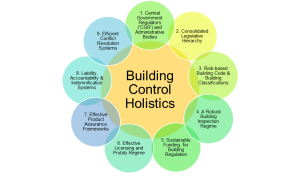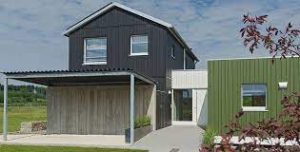How to Budget a Build: A Comprehensive Guide
Introduction
It might be exciting to consider planning a new home or a restoration project. But without careful planning, the project could easily get out of hand and become a money pit. Therefore, whether it is a new build or a renovation, budgeting is a crucial component of any building project. In this article, we’ll give you a thorough primer on setting a build’s budget.

Step 1: Determine the Total Project Cost
The first step in creating a construction budget is to calculate the overall project cost. This entails calculating the cost of all the supplies, labour, and other project-related costs. To do this, you must consider the project’s scope, the building’s size, and the calibre of the materials you plan to utilise. The next stage can be taken once you have a rough estimate of the project’s overall cost.
Step 2: Breakdown the Costs
The next stage in budgeting a build is to break down the expenditures. This entails identifying and classifying each of the many project-related expenditures. Among the popular categories are Materials.
Materials
The expense of materials is one of the biggest ones in any construction project. The foundation, framing, roofing, and finishing are all included in this category. It’s critical to select durable, time-resistant materials of the highest calibre.

Labor
In any construction project, labour costs are a considerable additional expense. The expense of hiring the project’s contractors, subcontractors, and other specialists falls under this category. It’s crucial to make sure you engage with knowledgeable and experienced people that can produce high-quality work within your budget.
Permits and Fees
Budgeting for a construction also requires taking permits and costs into account. Building permits, zoning permits, and any other licences necessary by your local government are all included in this category. Fees for inspections, plan approvals, and other administrative expenses could also be required of you.
Step 3: Allocate the Budget
The next step is to distribute the budget after you have a breakdown of the costs. Choosing how much money you’ll provide to each category is necessary for this. The criteria should be ranked in order of relevance and influence on the project’s outcome.
Allocate 30-40% to Materials
One of the biggest costs in any construction project is the cost of materials, as was already established. As a result, it’s crucial to designate a sizeable chunk of your money to this category. The ideal amount to spend on materials is between 30 and 40% of your budget.
Allocate 20-30% to Labor
When budgeting for a build, you also need to take the cost of labour into account. 20–30% of your budget, at the very least, should be set aside for labour. Nevertheless, this might change based on the dimensions and scope of your project.
<
Allocate 10-20% to Permits and Fees
When creating a budget for a build, you must account for permits and fees. They typically make up a smaller portion of the project’s overall cost, though. Permits and fees should ideally account for 10–20% of your budget. For a custom home building company vaucluse see here.
Step 4: Plan for Contingencies
Building projects are frequently plagued by unforeseen costs and setbacks. Therefore, it’s crucial to account for unforeseen events when creating your build’s budget. 10–20% more of your budget should be set aside to pay for any unforeseen costs that might occur during the project.
Step 5: Track Your Expenses
Budgeting for a project requires careful attention to keeping track of your spending. Keep track of all your costs, including the price of supplies, labour, licences, and other levies. This will enable you to monitor your expenditure and spot any areas where you might be going over budget. Spreadsheets or budgeting software can be used to keep tabs on your spending and budget.
Conclusion
Any building project must include a budget for the build. You may develop a reasonable budget for your project and make sure that you stay within your budget by following the instructions provided in this article. Do not forget to account for contingencies, log your spending, and divide your budget according to the significance and influence of each item. You may make your construction project profitable and enjoyable by using effective budgeting.
